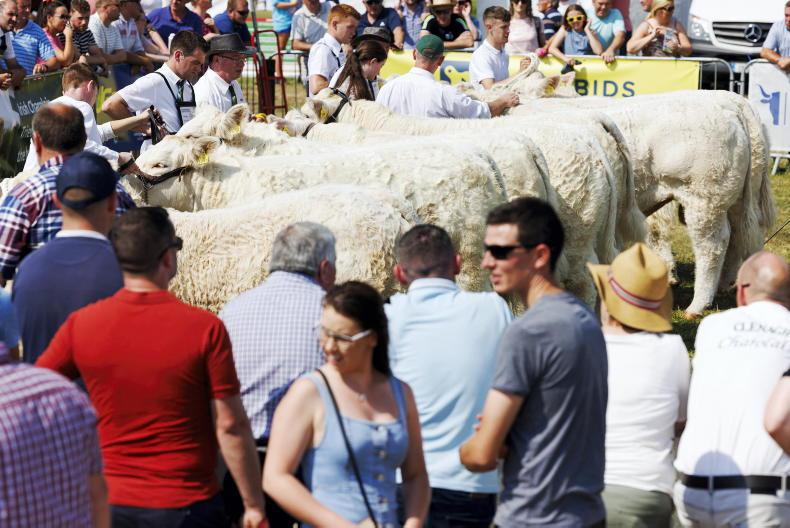It is “extremely difficult” to find an example where breeding cattle or sheep for the show ring has had a positive outcome for the functionality of a breed, Virginia-Maryland College of Veterinary Medicine’s Dr Phillip Sponenberg has said.
Speaking at the Irish Rare Breeds Society (IRBS) conference in Carlow on Friday, the professor of genetics said that while there are some exceptions, the general rule is that it’s “almost impossible” for the judge in the show ring to not pick out an extreme animal.
“Balance is extremely important, but very difficult to reward in most situations,” he said.
Within livestock breed societies, he said there is a “real tension” between an individual breeder’s short-term gain and what’s best for the breed long-term.
This, he said, can be seen in excessive feeding prior to shows and breeding for extreme muscle, resulting in difficult calving and lambing traits.
However, while agreeing with him that there are “downsides” to breeding livestock for the show ring, University of Minnesota professor of dairy cattle genetics, Dr Les Hansen, said that as long as there is awareness of these, there can still be positives.

Young people can develop an interest in livestock through showing, said Dr Les Hansen.
“Show ring experience is an opportunity for young people to bond with animals and actually consider a career of working with those animals.
The public speaking, decision-making, teamwork and all the other things that come from it,” he added.
He said that such showing experience can often be the carrot that gets young people interested in studying animal genetics and breeding, and that from there he works to educate them on informed breeding for an animal’s functional traits.

Livestock shows can improve public awareness of breeds and farming, says Dr Les Hansen. \ Donal O'Leary
Read more
All systems go for Tullamore Show
It is “extremely difficult” to find an example where breeding cattle or sheep for the show ring has had a positive outcome for the functionality of a breed, Virginia-Maryland College of Veterinary Medicine’s Dr Phillip Sponenberg has said.
Speaking at the Irish Rare Breeds Society (IRBS) conference in Carlow on Friday, the professor of genetics said that while there are some exceptions, the general rule is that it’s “almost impossible” for the judge in the show ring to not pick out an extreme animal.
“Balance is extremely important, but very difficult to reward in most situations,” he said.
Within livestock breed societies, he said there is a “real tension” between an individual breeder’s short-term gain and what’s best for the breed long-term.
This, he said, can be seen in excessive feeding prior to shows and breeding for extreme muscle, resulting in difficult calving and lambing traits.
However, while agreeing with him that there are “downsides” to breeding livestock for the show ring, University of Minnesota professor of dairy cattle genetics, Dr Les Hansen, said that as long as there is awareness of these, there can still be positives.

Young people can develop an interest in livestock through showing, said Dr Les Hansen.
“Show ring experience is an opportunity for young people to bond with animals and actually consider a career of working with those animals.
The public speaking, decision-making, teamwork and all the other things that come from it,” he added.
He said that such showing experience can often be the carrot that gets young people interested in studying animal genetics and breeding, and that from there he works to educate them on informed breeding for an animal’s functional traits.

Livestock shows can improve public awareness of breeds and farming, says Dr Les Hansen. \ Donal O'Leary
Read more
All systems go for Tullamore Show








 This is a subscriber-only article
This is a subscriber-only article










SHARING OPTIONS: